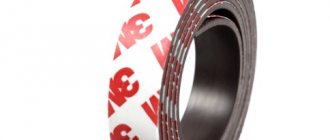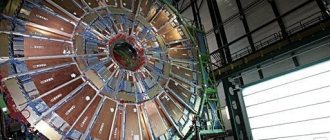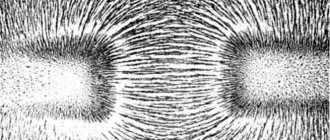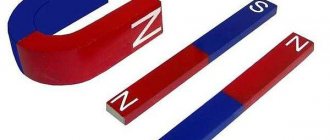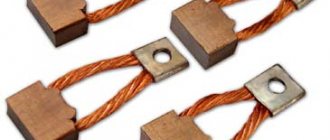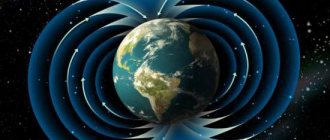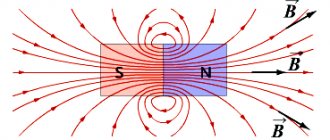Neodymium magnets are the most powerful magnetic material of the new generation today, which has found wide application in many branches of science and technology, as well as in everyday life. Each of us today can encounter them in everyday life, be it buying holders for a refrigerator, headphones, a metal detector, or a computer hard drive in which they are also used.
Neodymium is an active and fairly hard rare earth metal, which, when combined with iron and boron, acquires an incredibly high magnetization ability. This NdFeB alloy, first obtained in 1982, is used to make neodymium magnets of various shapes and sizes. Strong little magnets are most likely located near you right now, for example in your computer or smartphone.
What it is
A neodymium magnet is a magnetic element that is composed of neodymium rare earth boron and iron material. It has a crystal structure, tetragonal shape and formula Nd2Fe14B.
It was first created by General Motors in 1982. It is the strongest permanent magnetic element, the power of which is several times greater than usual. Equipped with a large magnetic induction of 12,400 gauss.
Note! This is a brittle alloy with the formula NdFeB, as well as a hard nickel-plated protective layer and the corresponding class. It is very popular and comes in various forms.
Advantages
The most common neodymium magnet is one that has an iron oxide alloy, which has good heat resistance, high magnetic permeability and low cost. Equipped with color coding, high coercivity, powerful magnetic field to hold objects suspended, compact size, light weight, affordable and wide range of applications. Has a long service life.
If an ordinary magnet works for 10 years and can be demagnetized, then a neodymium magnet does not lose its properties after 100 years. Another advantage is the shape. This product has a horseshoe shape. It gives the device a long service life. As for the cost, these are expensive products, but the cost is justified by excellent performance and impeccable reliability.
It is worth pointing out that the strength contained in neodymium magnets is another advantage. She is tall and it is impossible to find a competitor to her. This is a record type of indicator, the increase of which is impossible. Power is generated during manufacturing. Magnetization occurs after the alloy is formed. Thanks to existing technologies, the alloy is magnetized in such a way that the magnet has incredibly high power and this figure reaches a record.
Note! Power is a relative philistine concept. The force is stable, but it is measured using instruments. In this case, the readings depend on the thickness of the surface and cleanliness. The separation angle can have some influence.
Life time
The service life of the equipment, if used properly, is 30 years. Due to careless handling, the device may be damaged. The point is the lack of flexibility, as well as brittleness and cracking under heavy load. Falls, impacts, or reduced traction will reduce the life of the equipment. For this reason, it is necessary to avoid falls using parts that come into contact during movements.
Another extremely important point is the irreversible loss of magnetic properties due to heating. Therefore, grinding with cutting or drilling reduces the chain force and may ignite the alloy. If storage and operation are organized correctly, then magnetization is maintained for 10 years.
How to remove residual magnetization from a water meter
One of the simplest ways to verify that the meter has stopped is to directly see the magnet itself on the meter. But in practice, it is virtually impossible to confirm this, because if people agreed to such deception, they will go to the end.
Using the law on the inviolability of the home, they can simply not allow inspectors or other government employees into the apartment. The law in this case protects them.
If a person, after letting employees into the apartment, managed to remove the magnet, this can be easily checked using a special device. The Teslameter is capable of recording residual magnetization; it will differ significantly from the norm.
But this method has its drawbacks. Firstly, this is the price, which ranges around 30 thousand rubles. Not every housing office has such funds to purchase the device.
Design
When answering the question of what a neodymium magnet is made of, we can point out that it is a rare earth element that contains an atom with lanthanide or actinide. The classic composition may still contain an additive. It is used to increase strength with endurance and resistance to high temperatures. Boron is used in small quantities, iron is a binding element. Thanks to this composition, greater adhesion is obtained. When connecting several ferrite rings, you can separate them with your hands. As for neodymium magnets, this cannot be done.
How to use
Neodymium magnetic element is the strongest, exceeding analogues that are based on rare earth metal. In addition, neodymium is capable of maintaining a magnetized structure for a significantly long time. Such equipment can be used in various fields. For example, it is used in the manufacture of over-ear headphones with wind generators, motor wheels and scooters.
Note! Magnets are actively used in industrial, household, and medical fields. They are also used to carry out search work with a metal detector. They can often be found in plumbing fixtures or souvenirs.
Specific examples include the use of magnets in the development of medical devices, magnetic treatment of water, the creation of oil and technological filters, and the formation of actuators with highly sensitive sensors. In addition, they are needed to produce clothes with covers and shoes, and to create advertising, information and navigation materials.
Overall, neodymium is the most powerful permanent magnetic material that has high resistance to demagnetization, attractive power, and a metallic appearance. It has a long service life and consists of boron, iron and a metal of the lanthanide group.
The online store magnitstore.ru sells neodymium magnets, the adhesive force of which is ten times higher than their ferrite counterparts. There are universal products such as disks, rectangles, rods, rings. And targeted ones: search engines, mounts, car holders and others. All products, while relatively small in size, are very powerful. I would like to know what kind of field these strong neodymium magnets create and where does it even come from?
Basic information
Neodymium is a modern, latest development of scientists, on which a lot of time and effort has been spent. For many years, scientists from various countries have tried to create an alloy that would have powerful adhesive force. Of course, something similar has already been created, but these products cannot be compared with anything; the adhesion force of a small piece, the size of which is 7x5 cm, is 295 kg.
The magnet receives such extraordinary power due to an alloy of three metals: iron, boron and, in fact, neodymium. Externally it has a metallic luster, which is formed as a result of zinc or nickel coating. It can be completely different in shape: in the form of rectangles, disks, rings, rods, depending on the purpose. The sizes are also individual: the larger the sample, the greater its adhesive strength. Therefore, when buying neodymium magnets to order, you should know exactly for what purposes you need this device, and what parameters must be inherent in the chosen option to achieve them.
Magnetic susceptibility
To understand why such a strong neodymium magnet and where its magnetic field comes from, you need to understand (without delving into complex formulas and graphs) at least the basic physical concepts of permanent magnetization.
Let's start with magnetic susceptibility. This is the name of a dimensionless quantity (denoted c), which characterizes the ability of a substance to be magnetized after it is in a force field. (By the way, the magnetic field of a neodymium magnet is such that it itself can magnetize products made from other alloys).
Is it possible to demagnetize this magical alloy?
The demagnetization of the alloy of rare earth metals created by the genius of engineering science naturally occurs extremely slowly. We can safely say that this will take more than one hundred years. However, this can be done forcibly.
In order for a neodymium magnet to demagnetize, you need to know its weak points. This material is certainly amazing, but it also has its Achilles heel. Specialists who work with metals and neodymium know that it should not be heated too much or subjected to powerful blows. For all its strength, the material is delicate.
Demagnetization of a neodymium magnet can occur either accidentally or intentionally, in special situations related to production needs. However, it should be remembered that imparting such a strong magnetic field is not a cheap process, so creating situations for arbitrary demagnetization is irrational.
Magnetization
Numerically, magnetic susceptibility is equal to the magnetization of a substance at unit field strength. Magnetization (denoted by J) characterizes the magnetic state of a particular physical body. If it is placed in a force field, then it will receive a certain magnetic moment M. In this case, its magnetization will be equal to the magnetic moment of a unit volume V. If the body is uniformly magnetized, then J = M/V. Magnetization is directly proportional to the strength of the force field that caused it. At one stage in the production of NdFeB products, they are placed in a very powerful force field, which gives greater magnetization. Therefore, the neodymium magnet has a simply enormous grip.
Magnetic moment is a vector characteristic of a substance that is a source of a magnetic field. (If, for example, an ingot of iron is brought into a force field and magnetized, then it itself will become a source of magnetism). It is created by the magnetic moments of elementary particles (atoms), which have an ordered orientation in space and therefore add up. The strength of a neodymium magnet is great, in part because it has a significant magnetic moment.
Magnetic induction
The value of the residual magnetic induction (designated Br) allows you to understand how dense the power flux or how strong the magnetic field is produced by a given magnet in a closed system. Magnetic induction (designation B) is the reading of a gaussmeter obtained by measuring the power of the force field on the surface of a particular magnet. Both quantities are expressed in Tesla or Gauss (1 Tesla = 10,000 Gauss). Since the magnetization of a neodymium magnet is significant, its magnetic induction is also high, from 1.0 to 1.4 Tesla. For comparison, ferrites have from 0.1 to 0.4 T.
The volumetric magnetic susceptibility of any substance is numerically equal to the magnetization of its unit volume divided by the strength of the magnetizing force field: c = J/H. Paramagnetic materials have positive magnetic susceptibility because the direction of the molecular current field coincides with the direction of the external force field. (For diamagnetic materials it is the other way around).
What needs to be done to detect a magnetic field?
And the easiest way to detect the magnetic field is with a compass. This is a magnetized narrow strip of metal called an arrow. It is always directed along the lines of the earth's magnetic field.
Interesting materials:
What reactions are typical for alkanes? Give examples? What reactions are typical for alkenes hydrogenation? Which regions of Asia are the most densely populated? What regions are part of Oceania? What rivers are in North America? What resources are exhaustible and non-renewable? What sections does the hedgehog magazine contain? Which fish are omnivores? What planes are in GTA 5? What are the best perfumes?
Magnetization of paramagnetic materials
A neodymium magnet, whose adhesive force is so strong, is paramagnetic. It has positive magnetic susceptibility. In its normal state it does not have any noticeable magnetic properties. The reason is this. In it, like in other paramagnetic materials, the magnetic moments are compensated because there is no ordered arrangement of elementary particles. That is, in the case when there is no external magnetizing field, each neodymium atom still has some kind of “microscopic” magnetic moment. But neodymium does not have the same structure that is inherent in ferromagnets. Therefore, the atoms are randomly oriented, the magnetic moments are directed in different directions. The vector addition of their numerical values results in zero, which means that the magnetization of the entire ingot is also zero. How is it that neodymium magnets have such a strong attractive force?
Everything is very simple. When a paramagnetic material enters an external magnetic field, its atoms turn (orient) in one direction. After which the vector addition of unit moments will no longer be equal to zero. As a result, neodymium receives a total magnetic moment J. It is directly proportional to the external field strength H and directed along this field. When making a neodymium magnet, a magnetic field for its magnetization is created with an induction of about 3 - 4 Tesla.
There is one important point that is useful to know for those who are interested in the properties of NdFeB. The magnetic ordering of atoms is counteracted by the thermal energy of the substance. Despite the fact that neodymium magnets develop a very large force, the paramagnetic susceptibility of the main element Nd largely depends on temperature. This is why the NdFeB alloy cannot be heated to + 80 degrees C and higher - the atoms will lose orientation and the vector sum of their magnetic moments will again become zero.
This is the explanation of why neodymium magnets have an attractive force at all, and even such a large one. The two main points are that Nd is paramagnetic and a large force field is created to magnetize it. This is, of course, a simplified view. To understand why a neodymium magnet is reinforced with iron and boron, you need to master quantum physics.
We wrote this article to answer the question about classes of magnets, their standards, and physical characteristics.
Despite the fact that the magnets we offer are called neodymium, they can be very different from each other, because each magnet has its own physical characteristics, not just size, shape and coating. Therefore, the question of which neodymium magnets are of interest to you should not confuse you. In this article you will get answers to many of your questions.
Which magnet is used to stop the water meter?
It needs to be increased significantly or even given six months in prison. After all, this is ordinary theft! Why does a person who stole a can of canned food get two years, but a person who steals thousands of rubles gets off with only this fine? There's nothing to steal.
Or let the fine be 100 thousand rubles,” said the chairman of the commission, Igor Shpector. In turn, his deputy Artem Kiryanov believes that “the idea itself, in general, is correct, but, as usual, the problem will be in law enforcement practice.” "
Today, within the framework of administrative records, it will be very difficult to find the culprit in this situation: namely, witness testimony, video camera recordings, etc. - this is almost impossible. I think it will be practically impossible to make demands for payment of a fine on the actual responsible tenant based on incorrect meter data.
Read also: How to unscrew a plastic bolt
What do the letters and numbers mean in the classes of neodymium magnets?
Often, we, as manufacturers and sellers, want to hear the technical characteristics of the magnet, namely the letters and numbers in which they (the technical characteristics) are encrypted. And the buyer often thoroughly knows his field of application of magnets, but does not know the nomenclature, especially the international one. So, let's begin to understand the international nomenclature of magnets, namely classes, technical characteristics and designations.
First of all, neodymium magnets are divided into classes, which are designated by letters and numbers (for example, N35), which contain basic information about the magnet. Below is a standard nomenclature table of characteristics of neodymium magnets (look in the left column - the classes are indicated there).
In the table, we presented all numerical values in two units of measurement. The first, without brackets, is the measurement value in the SI system (this is the system in which our country operates), and the second (indicated in brackets) is the measurement in the international CGSE system (European standards). For your convenience, we decided to indicate both units of measurement in the table.
Neodymium magnet characteristics table
We begin to study the table from right to left. As you can see from the right column of the table, the main class difference between magnets is their operating temperature of use, that is, the permissible maximum temperature, above which the magnet begins to lose its magnetic properties. Thus, the temperature range of use of the magnet is indicated by the letter part of its marking (left column). Let's decipher these letters:
- Magnets brand N (Normal) – can be used at normal temperatures, that is, up to 80 degrees Celsius;
- Magnets brand M (Medium) – can be used at elevated temperatures, that is, up to 100 degrees Celsius;
- Magnets of grade H (High) – can be used at high temperatures, up to 120 degrees Celsius;
- SH (Super High) magnets
- Magnets of the UH (Ultra High) brand – can be used at temperatures up to 180 degrees Celsius;
- Magnets brand EH (Extra High) - can be used at temperatures up to 200 degrees Celsius.
It is worth mentioning that negative temperatures do not affect the magnetic properties of most magnets.
The numbers indicated in the magnet class designation: N30, 33M, 35H, 38SH, 40UH, etc., indicate Magnetic Energy (fourth column of the table), measured in kiloJoules per cubic meter. This criterion of magnets is responsible for their power or the so-called “tearing force,” that is, the force that must be applied to the magnet in order to “tear” it from the surface. It is necessary to understand that the surface (steel sheet) must be perfectly flat, and the applied force must be perpendicular to the sheet. These are the so-called ideal or theoretical conditions. It is absolutely clear that the higher the digital designation of the magnet, the higher its pull-out force.
Treatment of joints with a magnet at home - Site about injuries and their treatment
The effect of the magnetic field on the environment and the human body cannot be ignored. Therefore, over the long period of mankind’s acquaintance with the properties of magnets, our ancestors tried on themselves amazing properties for the treatment of an endless number of diseases.
Today, due to the emergence of a significant amount of research on the healing properties of metals with magnetic properties, and due to the widespread use of home magnetotherapy devices, the effects of a magnetic field on the human body have been well studied. And although official medicine refuses to recognize magnetotherapy as a treatment, the use of magnets as a folk remedy is quite justified.
Magnet treatment at home
It is believed that magnets can treat various types of injuries:
- bruises
- cuts;
- fractures;
- ligament ruptures, etc.
Magnetic therapy also helps to avoid too active scarring due to skin injuries, normalize blood pressure, tone the body, help with problems in the genitourinary area, diseases of the ENT organs, joint pathologies, etc.
Magnetotherapy
The beneficial effects of a magnetic field are achieved by placing magnets in certain areas of the human body where active points are located through which the influence of the field quickly spreads.
When doing magnet therapy on your own, it is recommended to place magnets in areas of the body such as:
- wrists;
- neck;
- groin area.
Magnets also work outside these points, but their effect is not so pronounced, since large vessels are located in the three listed zones, which means that the “charged” blood quickly disperses throughout the body.
Magnetic therapy: from history
The history of human acquaintance with the healing properties of magnets goes back more than one thousand years. The ancients took crushed magnetic powders internally in the hope that the miracle stone would “weaken” the stomach; they applied them to sore spots, hoping to get rid of pain and bleeding, swelling and even madness; they sprinkled crushed stone-magnet to enemies as poison.
Magnetic therapy
For the first time, mentions of the influence of “magnetic stones” and their properties on humans are found in Ancient Chinese sources. Asians believed that magnets normalize the flow of vital energy.
Wearing a magnet, as a way to strengthen your immunity, get recharged from a magnetic source and tone yourself, was also practiced in Ancient Egypt.
Cleopatra herself wore jewelry with magnetic inserts, and the healers of Ancient Greece believed that magnets were a vital necessity in military campaigns, as they helped wounded soldiers recover faster.
Jewelry with magnetic inserts
Interest in healing magnets continued to grow in the Middle Ages, when the electromagnetic radiation of the planet was discovered.
Western kings were treated with magnets for arthritis, and, for example, Indian customs required that a sick person be laid with his head to the north so that his position coincided with the magnetic field of the planet.
Paracelsus also mentions magnets, noting in his works that wounds heal more intensively when treated in combination with magnetotherapy.
Magnetic therapy developed primarily where there were no professional doctors, but even where there were doctors, the magnetic field was recommended to patients as an additional, home therapy to the main treatment. Thus, in the USA, traveling salesmen sold insoles, jewelry, bandages, belts and bracelets with magnets.
Magnetotherapy
True, in the space age, Europe and America, unlike the East, where magnetotherapy is officially recognized, almost forgot about magnets due to the active development of pharmaceuticals.
But in the Asian part of the world, many people still believe in the power of magnets and in the fact that whether a boy or a girl is born depends on the direction in which the heads of the spouses are directed during conception.
To this day, in Tibetan schools, magnetic strips are applied to the neck and head for better learning. And in Korea, needles are charged with magnets before reflexology sessions.
By the 21st century, magnetic therapy has moved from being a random aid to the category of scientifically proven treatments.
Principles of magnetic field treatment
Principles of magnetic field treatment
The therapeutic effect of a magnet is due to the fact that the magnetic field can impart certain properties to the blood within our circulatory system. The magnetic field is safe for people. It, bypassing all the integuments, as well as body tissues and bones, affects physiological fluids, in particular blood, which supplies all organs and tissues of the body with oxygen and nutrients.
- Magnets improve blood circulation and vascular condition. Iron contained in human blood interacts with the magnetic field. The blood is ionized and begins to circulate more efficiently through the vessels, dispersing stagnation. Thanks to a complete blood supply, the condition of the nervous system, joints, and bones improves.
- Secondary magnet currents help reduce pain.
- Another result of the magnetic effect on iron-containing red blood cells is the normalization of intracellular polarity, disturbed by all kinds of diseases and mutations.
- The magnet activates the enzyme systems of the body.
- Charged metal helps to quickly rid the body of toxins and activate its regenerative powers.
- The sedative and anti-inflammatory effects of the electric field have also been proven.
Bracelet with hematite, tourmaline and magnets
Unlike other methods of physiotherapy, working with the human body using magnetic therapy excludes external interventions that are different from human nature. That is, a magnet is a natural method of influence that gently stimulates the intensity of blood circulation. The procedures do not involve any complex equipment, are cheap, and free of any risk.
Natural and artificially created magnets are used for treatment. The latter can be sources of constant magnetic radiation of varying strengths or activated using electricity. Electromagnets work when current passes through them. At home, this type of magnetic therapy is used in portable devices. The operating principle of a magnet does not depend on its type (permanent or electric).
Polar magnet poles treat various diseases:
- “+” helps against swelling and inflammatory processes;
- “–” from bacterial infection.
Using the influence of a magnetic field on the blood, you can effortlessly solve problems in your body such as: improving the condition of the body as a whole; relieving chronic pain; increasing immunity; increase in vitality; intensification of peripheral blood circulation; treatment of depression, etc.
Magnetotherapy
Rules for magnetic treatment
You cannot treat with a regular household magnet. Only specialized medical products, used strictly according to the instructions and on the advice of a doctor, have a positive effect.
- You cannot conduct a session on an empty stomach.
- Alcohol and caffeine are prohibited during magnetic therapy.
- It is better to perform the procedure at the same time.
- Do not use the magnet at elevated temperatures or pressure surges.
Magnetic “charging” for the body is carried out up to 4 times a day, the duration of each session should not exceed 20 minutes.
What to treat with a magnet?
It is recommended to use a magnet in parallel with the main treatment for the following diseases:
- disturbances in the functioning of the cardiovascular system;
- neuritis;
- neuralgia;
- migraine;
- vegetative-vascular dystonia;
- hypertension 1-2 degrees;
- IHD accompanied by angina pectoris;
- hypotension and post-infarction cardiosclerosis;
- dysfunction of the central nervous system and PNS;
- ischemic stroke;
- mechanical injury to the spine;
- disruptions in spinal circulation;
- polyneuropathy of various origins;
- neuroses or neurasthenia;
- depression, insomnia and seasonal nervous diseases;
- disturbances in the functioning of peripheral vessels;
- 1,2,3 stages of atherosclerotic changes;
- chronic lymphovenous insufficiency;
- Raynaud's syndrome;
- thrombophlebitis;
- arrhythmia and tachycardia;
- ODA diseases;
- arthrosis and arthritis of various origins;
- a variety of mechanical injuries;
- bronchopulmonary diseases (except those that require hormonal treatment);
- disturbances in the functioning and diseases of the gastrointestinal tract;
- pathologies and diseases of the ENT organs;
- acute and chronic diseases of the genitourinary system;
- abnormalities in the functioning of the genitourinary system (painful menstruation, decreased potency, early menopause, etc.);
- dermatological problems;
- weeping wounds, bedsores, dermatological problems such as eczema, as well as frostbite or burns;
- postoperative conditions during the rehabilitation period;
- adhesions of various origins;
- low immune status.
When is a magnet contraindicated?
There are a number of diseases and conditions of the body in which magnets cannot be used for medicinal purposes, so as not to aggravate the patient’s situation. Contraindications are absolutely specific and all of them are related to the fact that people suffering from these diseases are contraindicated for changes in the circulatory system that magnetic therapy can create. Magnetic therapy and:
- whether the patient has a pacemaker;
- increased bleeding, a tendency to hemophilia and this disease itself;
- tuberculosis in the active phase;
- pregnancy;
- terminal conditions;
- age up to one and a half years;
- pronounced somatic pathologies;
- period within 3 weeks after heart attack and stroke;
- respiratory or heart failure;
- fever with high temperatures;
- mental illness;
- individual intolerance to magnet components.
For children under 18 years of age, only local magnetic exposure is indicated.
Magnet Application Points
The wrist is an active point on the human body. This view is shared by both Asian and Western medicine. For example, the Chinese judge a person’s vitality by the condition of the wrist. It’s easy to attach a magnet here, say, by wearing it as a bracelet. The proximity of the vessels and the simplicity of magnetic therapy using a bracelet make this method of home treatment with magnets the most popular.
Sellers of bracelets estimate that about 14,000,0000 bracelets with magnetic properties are sold around the world every year.
This method of combating rheumatic or headaches, arthritis and motion sickness is used by pensioners, athletes and even children.
The magnetic bracelet corrects the functioning of the respiratory system, cardiovascular system, and supports the body’s defenses during acclimatization or intoxication.
- Belt with magnets
Neck jewelry made of active metals, therapeutic collars, belts or corsets supporting the spine with magnetic elements are very popular among those who are concerned about osteochondrosis, lordosis, joint diseases, bone problems, etc.
The second category of people who choose to wear a magnet on their neck are patients with bronchopulmonary pathologies. Jewelry is also worn on the neck for gynecological diseases, dermatitis of the upper half of the body and high blood pressure.
Sometimes the magnet is simply hung on a long string so that it hangs under clothing to the solar plexus area or to the abdomen.
Manufacturers produce underwear with magnetic strips or plates sewn into it, which fit snugly exactly where it is needed. There are ready-made knee pads, elbow pads, corsets, panties, and masks to solve a variety of problems.
- Rugs with magnets
The mats are intended for those who want to be treated for insomnia, neuroses and other misfortunes without leaving the sofa or their workplace. There are special mats-discs for placing on their carafe with water that needs to be magnetized.
It is believed that rugs can reduce geopathogenicity around them. The magnetic disk is used for taking a bath, the duration of which should be no more than 15 minutes. A bath helps with the primary symptoms of acute respiratory infections, since magnetized water is a natural antiseptic.
You can douche with it, gargle, apply to affected skin, or drink.
- Magnetic-infrared laser therapeutic device RIKTA-ESMIL(2)A
Source: https://crb-iraf.ru/ortopedicheskie-izdeliya/lechenie-sustavov-magnitom-v-domashnih-usloviyah.html
